
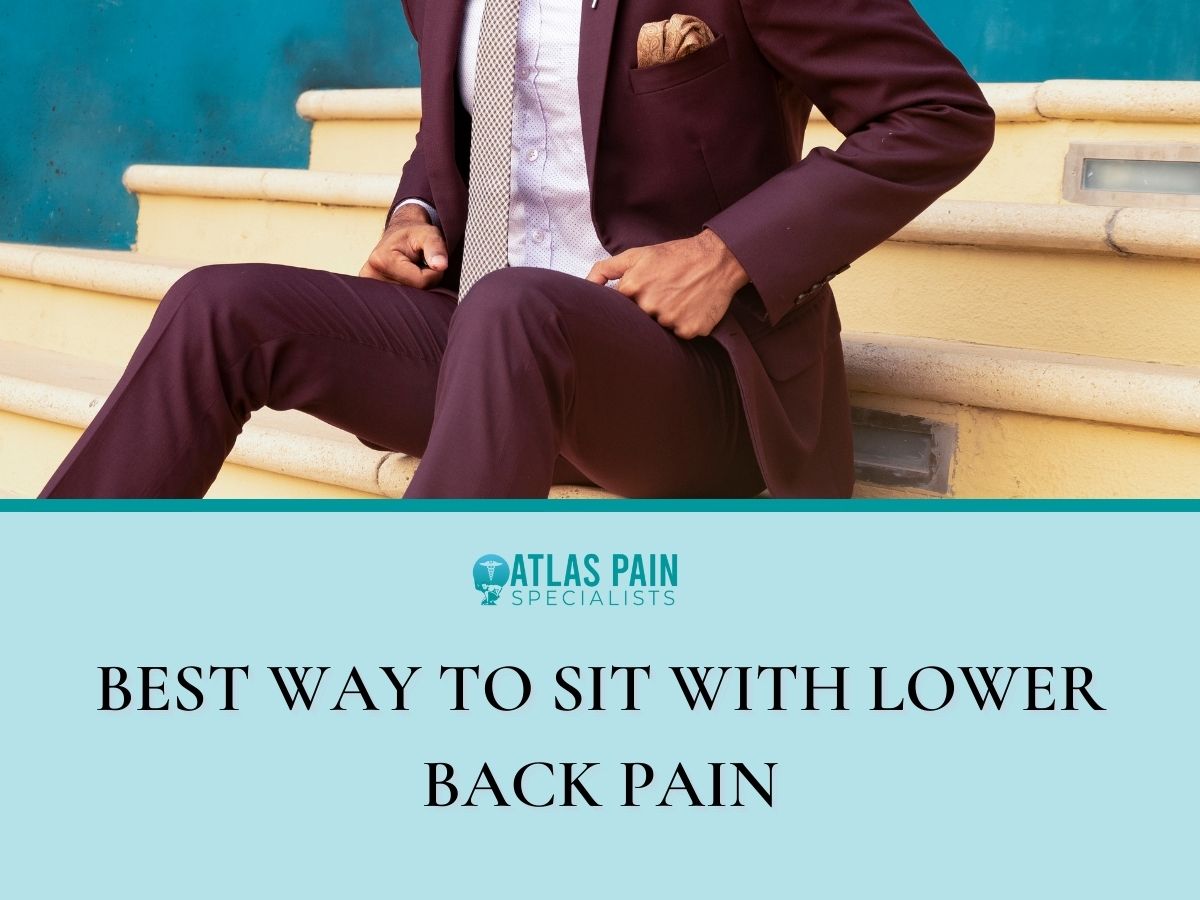
Best Way to Sit with Lower Back Pain
It doesn't matter if your lower back pain is a severe, searing agony or a dull ache; either way, it's not something to be taken lightly. Finding the best way to sit with lower back pain helps relieve back pain by offering spine support, leg movement, and reduced tension on pelvic and lower back muscles.
The key is to locate the position when your pelvis is completely neutral and your weight is evenly distributed. The end result is less of the persistent low back pain you've been experiencing.
Causes of lower back pain when sitting down
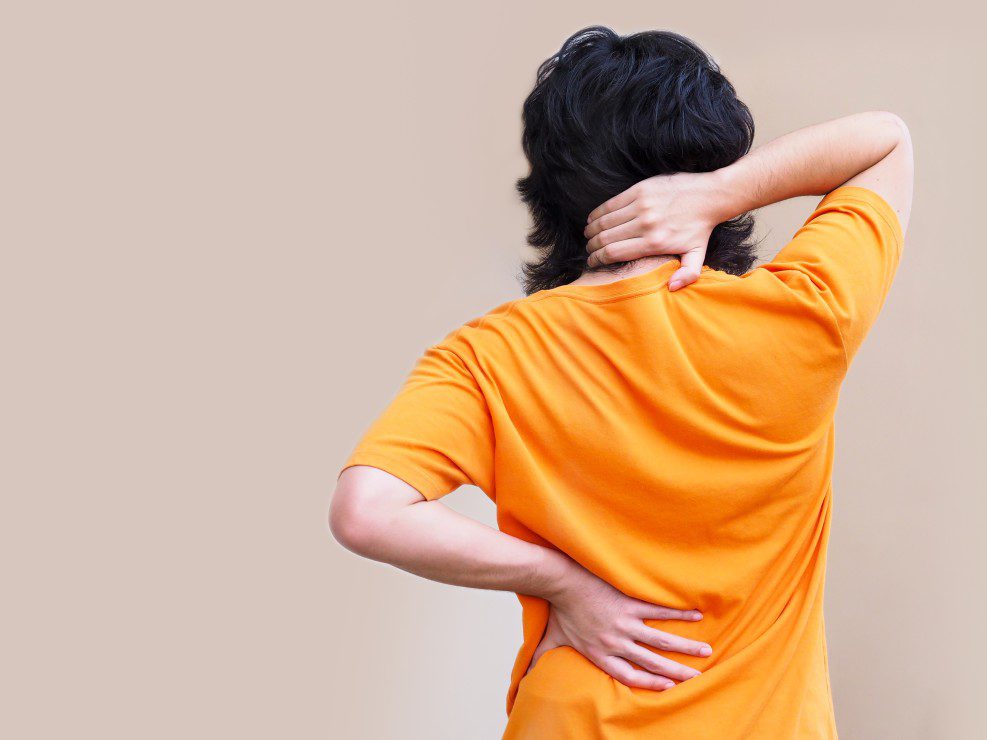
There should be two mild bends from front to back in a healthy spine. There is an inward bend in the lower back medically referred to as lordosis and an outward curve of the thoracic spine known as kyphosis.
Sagittal imbalance refers to a misalignment of the spine from front to back. There is a wide variety of reasons why someone can be experiencing back pain.
Poor sitting posture is a common contributor to back pain. It's possible that it may be worsened by a health problem.
The discs, which are filled with fluid and prevent the vertebrae from grinding against one another, can be strained when one sits in a slouched or stooped position. Let's take a look at why your back hurts while you're seated and what you can do about it.
1. Sciatica
Pain along the sciatic nerve, which extends from the lower back to the back of the legs, is known as sciatica. Even though prolonged sitting might aggravate the condition, sciatica often affects just one side of the body.
2. Herniated disc
If you have a herniated disc, one of the first symptoms you'll notice is pain in your lower back. It can develop over time, after a back injury, or through constant, minor strain such as bad sitting habits.
3. Muscle strain
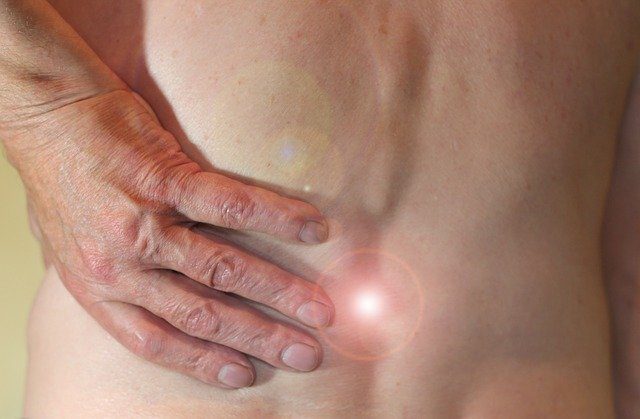
A lumbar strain is an injury to the muscles of the lower back. As the name implies, it happens when your back is overstretched or twisted.
Although most people make a full recovery from a strain within a month, if the cause is bad sitting posture and no action is taken to improve it, the strain may return repeatedly.
4. Degenerative disc disease
Lumbar or degenerative disc disease describes deterioration of the shock-absorbing cushions (discs) between the vertebrae in the lower back. Discs wear out with age, and injuries can rupture the protective annulus fibrosis.
There isn't a lot of blood flow to this area of the disc, so when it tears, the disc can't heal itself. Degenerative disc disease can cause severe discomfort in the lower back, buttocks, and thighs, which may be exacerbated by bending or sitting in some persons but absent in others.
5. Posture
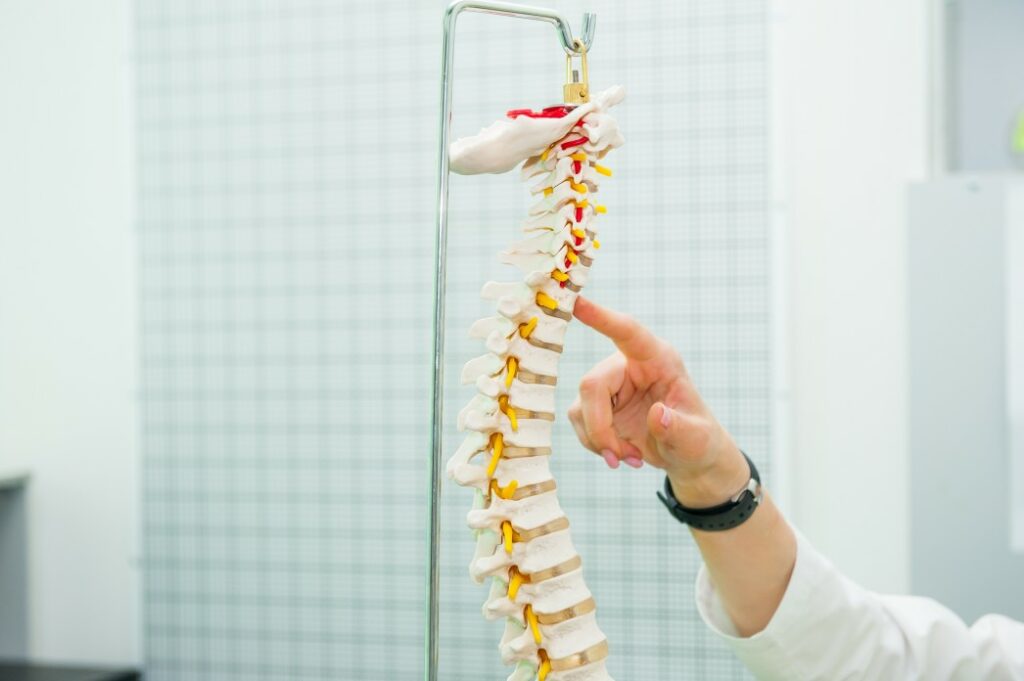
To begin, unlike what many may believe, there is no such thing as a "perfect posture," yet there are issues that can arise when the body's natural alignment is altered. The natural alignment of the body is the individual's own unique way of bearing its own weight.
Whether sitting or standing, if your posture is off, you could increase your risk of back pain. Problems can arise from excessive forward slouching or back tilting.
The pain in your back may not be directly related to your posture, but it may be made worse by it. That's why it's crucial to maintain a healthy posture while seated.
A deterioration in posture might cause additional issues by weakening the other structural muscles that ensure correct movement.
6. Not being in shape
The muscles are a structural component of the body that serves multiple purposes in movement. They do, however, function as a unit to guarantee freedom of movement.
When one of these is compromised, it places extra stress on the remaining muscles.
Core strength can be greatly improved through stretching and aerobic activity.
The muscles around your midsection and lower back, as well as your hips and buttocks, are considered part of your "core." If these are weakened, your spine may not be receiving the support it needs, which can result in discomfort.
Best sitting position for lower back pain
Improving your posture can help as it's unhealthy to stay seated for extended periods of time. Long-term stress on the spine can be caused by doing it with a rounded back, drooping to one side, or leaning too far back.
Maintain a neutral spine and avoid a forward rotation of the pelvis as doing so, your lower back curves. Just imagine a straight line running from the base of your skull to the top of the ceiling; this will help you sit up straight.
The small of your back will feel a pleasant stretch and extend if you sit up straight. You should also avoid sitting in the same position for too long.
If you suffer from back discomfort, sitting in one position all day may be making your symptoms worse. To prevent muscle fatigue and soreness, it's important to switch up your posture frequently.
Some of the best ways to avoid lower back pain when sitting include:
1. Neutral sitting positions
By switching neutral positions, you can give your back and legs a short reprieve from their usual strain. You may be in a good sittting position but rotating between different positions frequently is important, especially if you suffer back pain.
Some of these neutral positions include;
- Reclined Sitting
Since the backrest bears portion of the body's weight, this position requires less of the back muscles to operate, making it easier on the back. Have your feet flat on the floor, knees bent to 90 degrees, and back bent to 110 degrees.
Maintain a back angle of 100 to 110 degrees while working actively. Setting your backrest to 135 degrees has been demonstrated to be the most comfortable position for undertaking passive work.
- Declined Sitting
This features an upright position with the forearms on the desk and the thighs angled downwards. The torse is angled forward and the angle of your legs is less than 90 degrees, rather than a straight 90 degrees, to accommodate this position.
There is no slouching or hunching. In doing so, you can maintain the curve of your lower back, which has been shown to have a restorative effect on fatigue levels.
Declined sitting can be achieved in several ways. Consider kneeling chairs or saddle chairs with a 20-degree seat decline to get the most out of this position.
- Supine Sitting
Laying nearly horizontal while using a computer is more accurately referred to as "supine computing." This allowsyou to rest the greater part of your body on the bed, sofa, or floor.
Contrary to popular belief, the discs in your spine experience the least amount of stress when you lie flat. Assume this position at your desk and the workstation will support the majority of your body weight.
While you can certainly make your own prone desk, buying one will likely break the bank. The final option is the supine position whereby you must lie almost horizontally to complete your tasks.
Supine sitting is a more extreme alternative that can provide the most relief for persons with severe back pain. However, you shouldn't make it your default working posture; instead, switch between the aforementioned options.
2. Proper sitting adjustment
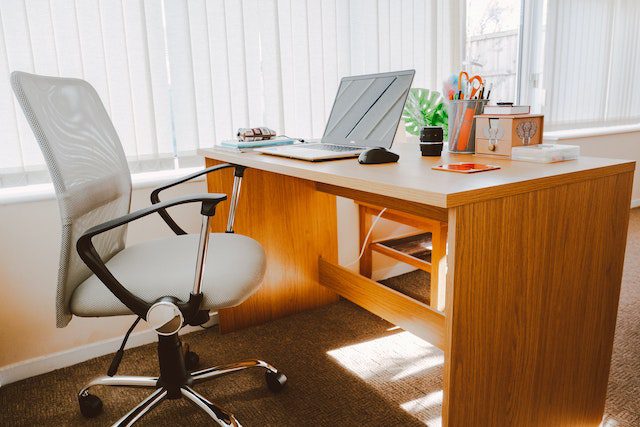
Most of our days are spent sitting, either at work or at home. You may have been taught that you should constantly maintain a back straight posture, but this isn't necessarily the case.
If you suffer from lower back pain, the worst thing you can do is adopt a slouching or hunched forward position. There is a lot of strain on your back and spinal cord when you're hunched over like that.
If you suffer from low back pain while sitting, you should recline your chair back at least 100 degrees. When compared to sitting with your back at 90 degrees, this alone can relieve up to 20% of the pressure on your spinal discs.
3. Good siting angle
The incline of your spine and the bend of your knees characterize your sitting posture.
Having these will help you avoid lower back pain, which can occur when the lower back is not properly supported.
For a healthy posture, your upper body should be at a certain back angle, while your lower body should be at a certain knee angle. The goal of these rules, as strict as they may seem, is to put your body in a neutral position that prevents back strain and promotes healthy blood flow.
You should sit with your feet flat on the floor and your knees bent to around 90 degrees. Feeling antsy in this position is your body trying to tell you that it needs you to get up and move about a bit.
4. Sitting position with good lumbar support
Having the right support and the correct body angle can help lessen the pain in your lower back. The natural curve of your lower back is preserved with lumbar support, which relieves stress on your spine when you're seated.
Because of the importance of the lumbar region, back support is essential for those suffering from low back pain. The natural curvature of the lower back is maintained by the support, relieving stress on the spine.
Sit with your hips placed on the backrest to see if you need more lumbar support in your workplace chair. You need extra lumbar support if your lower back is able to slide outward from the backrest.
You may also need lumbar support if your back curves forward when you cram your hips to the very end of the chair. Not everyone need extra lumbar support, but if you do, you'll notice a tremendous difference.
Both healthy people and those with lower back pain may benefit most from an external lumbar pillow with a cut out design. Back pain can also be alleviated by placing an orthopedic back stretcher behind the chair.
5. Using armrests to your advantage
About 12% of your total body weight is located in your upper limbs. Without proper back support, you may experience pain in your neck, shoulders, and lower back.
It can be uncomfortable to have your arms raised for long periods of time; arm rests are designed to alleviate this problem. The arm rests can also be props to help you when standing up.
If your office chair has sturdy armrests, you can relieve around 10% of your body weight from your spine. When typing or talking on the phone, always prop up your arms on the armrests of your chair or on the desk.
6. Less twisting and overstretching
You should also try not to twist your body too much when seated as back pain and spasms result from this. The big muscles and ligaments that support your spine might be torn if you repeatedly twist your body in that direction.
When seated overstretching happens when the keyboard, mouse, and documents you use most often are set too far away from you on your desk. Since you'll naturally lean forward while doing this, you'll put more stress on your spine.
Turn your entire body and office chair around if you need to reach anything on the other side of the room. Raise your seat and move the computer so that your forearms form a right angle with your keyboard and mouse, no more than 100 to 110 degrees.
While seated, try to avoid twisting your waist. Position the things you use most often in your "primary zone," or the immediate vicinity of your desk.
How to prevent lower back pain from sitting
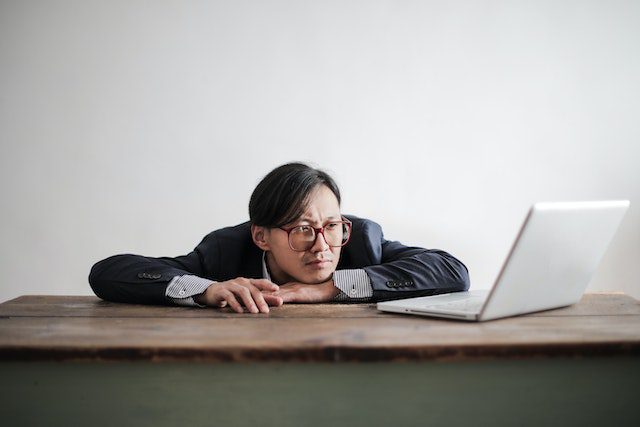
Some cases of back discomfort can be traced to an imbalance in strength between the left and right sides of the body, making it all the more important to perform exercises that target both sides equally. Avoid sitting for extended periods of time whenever you can.
Lower back pain can be avoided by being active. Strengthening the back through exercise on a consistent basis can help alleviate pain in the back.
If you spend your day at a desk, it's important to get up and move around every 30 minutes. If you want to avoid further pain attacks, spacing out your breaks throughout the day is a good idea.
1. Don't use sitting as a way to relieve lower back pain
Bed rest was once the standard medical treatment for back discomfort. Now we know that doing nothing is one of the worst options.
After the first discomfort diminishes, you should try to increase your activity level rather than decrease it because sitting can exacerbate some conditions. Sitting can aggravate preexisting back discomfort and cause additional issues.
After a long day on your feet, taking a seat should be a welcome relief. However, many women experience severe discomfort when seated for extended periods of time.
Disc issues, which affect the cushions between your spinal bones, are one such issue.
A herniated disc is one that has developed a bulge, which can put pressure on a spinal nerve.
Researchers have discovered that exercise is a great strategy to quickly lessen the discomfort of back pain. You shouldn't take more than a couple of days off but get up and slowly start moving again.
2. Correctly stand from a seated position
When you've settled into a comfortable seated position, the way you get to your feet is just as important. To relieve strain on the lower back, you can staddle while seated.
You can move over to the side of the seat and put your feet flat on the floor for a bit of extra support and stability. Once you've accomplished this, you can use the leverage gained by bringing one leg back slightly.
Use the armrests of your chair to help you transfer your weight to your legs. Use the muscles in your legs to help you stand by leaning forward ever-so-slightly.
You should not use your back muscles or bend over at the waist.
Frequently Asked Questions
Why do you get lower back pain when seated but not when standing?
Some activities may come more easily to you when standing up than when seated. You may have poor posture when seated.
In time, you'll be able to sit as comfortably as you do while you're standing. You will no longer need to worry about low back pain interfering with your normal activities.
How can I sit with lower back pain?
Lower back pain can be debilitating. If you're in constant pain, you may have trouble concentrating, feel anxious, and enjoy fewer things.
Many jobs require hours of sitting and, therefore, if you have lower back pain and can't exercise, it may worsen. Sitting differently may ease lower back muscles and nerves.
You may be able to relieve back pain in various situations by being keen on your sitting angles. Your back and knees should be perpendicular to the ground and you should avoid slouching.
About Dr. Sean Ormond



